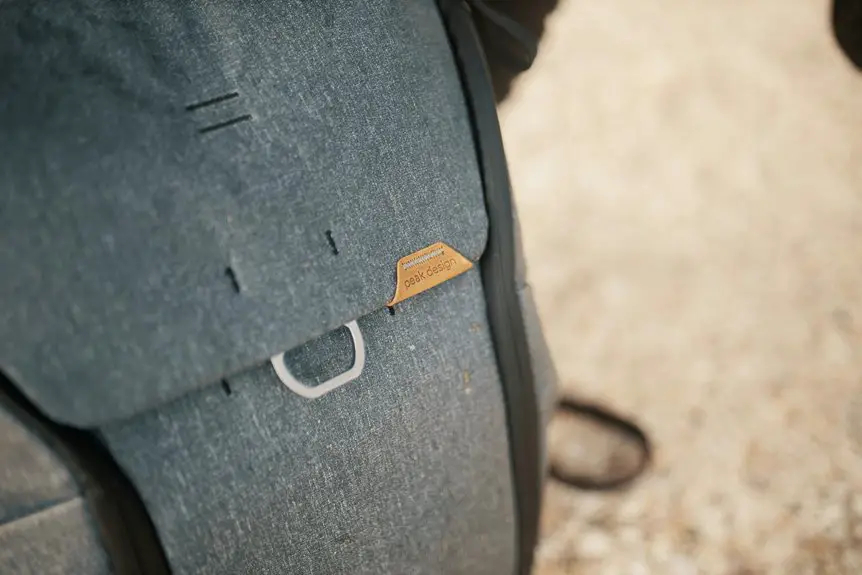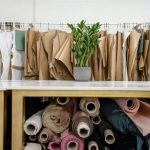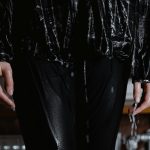When it comes to tough natural fabrics, you’ve got some impressive options. Each fabric offers unique qualities that make them suitable for heavy-duty use. Whether you need durability, breathability, or moisture-wicking properties, there’s a natural choice that fits your needs. Curious about which fabrics stand out and why they could be the perfect fit for your next project? Let’s explore the top contenders.
Table of Contents
Key Takeaways
- Hemp: Known for its exceptional durability, hemp is resistant to mold and mildew, making it ideal for heavy-duty applications like bags and upholstery.
- Linen: Renowned for its strength, linen is perfect for workwear and home textiles, offering breathability and high moisture absorption.
- Ramie: With greater tensile strength than cotton and linen, ramie is wrinkle-resistant and suitable for both casual and formal heavy-duty use.
- Organic Cotton: This eco-friendly option is durable, hypoallergenic, and versatile, making it suitable for various heavy-duty applications without harmful chemicals.
- Bamboo: Extremely durable and antibacterial, bamboo wicks moisture effectively, ensuring comfort during intense activities while remaining sustainable.
Hemp
Hemp is one of the toughest natural fabrics available, renowned for its durability and strength. When you choose hemp, you’re opting for a material that withstands wear and tear like no other.
Its fibers are incredibly resilient, making it perfect for heavy-duty applications, whether you’re crafting clothing, bags, or upholstery. You’ll appreciate how hemp resists mold and mildew, ensuring longevity even in humid conditions.
Plus, it breathes well, keeping you comfortable in various climates. As you explore sustainable options, hemp stands out because it requires fewer pesticides and less water than many other crops.
Linen
When it comes to heavy-duty natural fabrics, linen deserves a prominent spot alongside hemp. Known for its incredible strength and durability, linen’s fibers are much stronger than cotton, making it an excellent choice for various applications. Whether you’re crafting workwear or home textiles, linen can hold up against wear and tear. Plus, it’s naturally breathable, allowing for comfort even in warm conditions.
Here’s a quick comparison to highlight its advantages:
| Feature | Linen |
|---|---|
| Strength | High |
| Breathability | Excellent |
| Moisture Absorption | Good |
| Eco-friendliness | High |
Choosing linen means you’re opting for a sustainable, tough fabric that meets your heavy-duty needs effortlessly.
Ramie
While you may not hear about ramie as often as other natural fabrics, it stands out for its remarkable strength and resilience. This fiber, derived from the ramie plant, boasts a tensile strength that’s often greater than even cotton and linen.
You’ll appreciate its ability to resist wrinkles, mildew, and pests, making it an excellent choice for heavy-duty applications. Plus, ramie’s natural sheen gives it an appealing look, perfect for both casual and formal wear.
It’s also breathable, keeping you comfortable in various weather conditions. When you’re considering durable fabrics for your projects, ramie should definitely be on your radar.
It combines longevity with low maintenance, ensuring your investments stand the test of time.
Organic Cotton
Organic cotton is a standout choice for those seeking a sustainable yet durable fabric. It’s grown without harmful pesticides or synthetic fertilizers, making it safer for both the environment and your skin.
Organic cotton offers a sustainable and eco-friendly fabric choice, free from harmful chemicals for your skin and the environment.
This fabric’s strength lies in its fibers, offering impressive durability while remaining soft and breathable. You’ll find it ideal for various heavy-duty uses.
- Naturally hypoallergenic
- Stronger than conventional cotton
- Breathable and moisture-wicking
- Biodegradable and eco-friendly
- Versatile for clothing and home textiles
Bamboo
Bamboo emerges as a remarkable fabric choice for heavy-duty applications, thanks to its incredible strength and resilience. You’ll appreciate its natural antibacterial properties, making it perfect for items that endure daily wear and tear. Plus, bamboo’s moisture-wicking ability keeps you cool and dry, enhancing comfort during intense activities.
Here’s a quick comparison of bamboo’s benefits:
| Feature | Benefit |
|---|---|
| Strength | Extremely durable |
| Moisture-wicking | Keeps you dry and comfortable |
| Antibacterial | Reduces odors and bacteria |
Choosing bamboo means opting for a sustainable fabric that lasts. So, if you’re searching for a tough yet eco-friendly option, bamboo shouldn’t be overlooked!
Frequently Asked Questions
Are These Fabrics Eco-Friendly and Biodegradable?
When it comes to eco-friendliness, you’re in the right ballpark. Many natural fabrics are biodegradable, breaking down over time and reducing environmental impact, so you can feel good about your choices while being stylish.
How Do These Fabrics Compare in Terms of Cost?
When comparing costs, you’ll find some natural fabrics are pricier due to their durability and production processes. However, investing in quality materials often saves you money over time, as they require less frequent replacement.
Are There Any Allergies Associated With These Natural Fabrics?
Imagine wearing a sweater made from a beloved pet’s fur. Natural fabrics can trigger allergies in some people, particularly those sensitive to wool or cotton. Always test a small patch to avoid discomfort or reactions.
Can These Fabrics Be Dyed Easily?
Yes, you can dye these fabrics easily, as their natural fibers absorb dye well. Just make sure to use the right dye type and follow instructions carefully to achieve vibrant, lasting colors.
What Is the Best Way to Store These Fabrics?
To store these fabrics, keep them in a cool, dry place away from direct sunlight. Use breathable bags or containers to prevent moisture and pests, ensuring they remain in good condition for future use.
- Does Weave Density Affect Natural UV Protection in Fabrics? - June 8, 2025
- Choosing Outdoor Curtain Fabrics: What Offers Natural UV Resistance? - June 8, 2025
- Top Natural Fiber Hats for Maximum UV Protection - June 8, 2025







